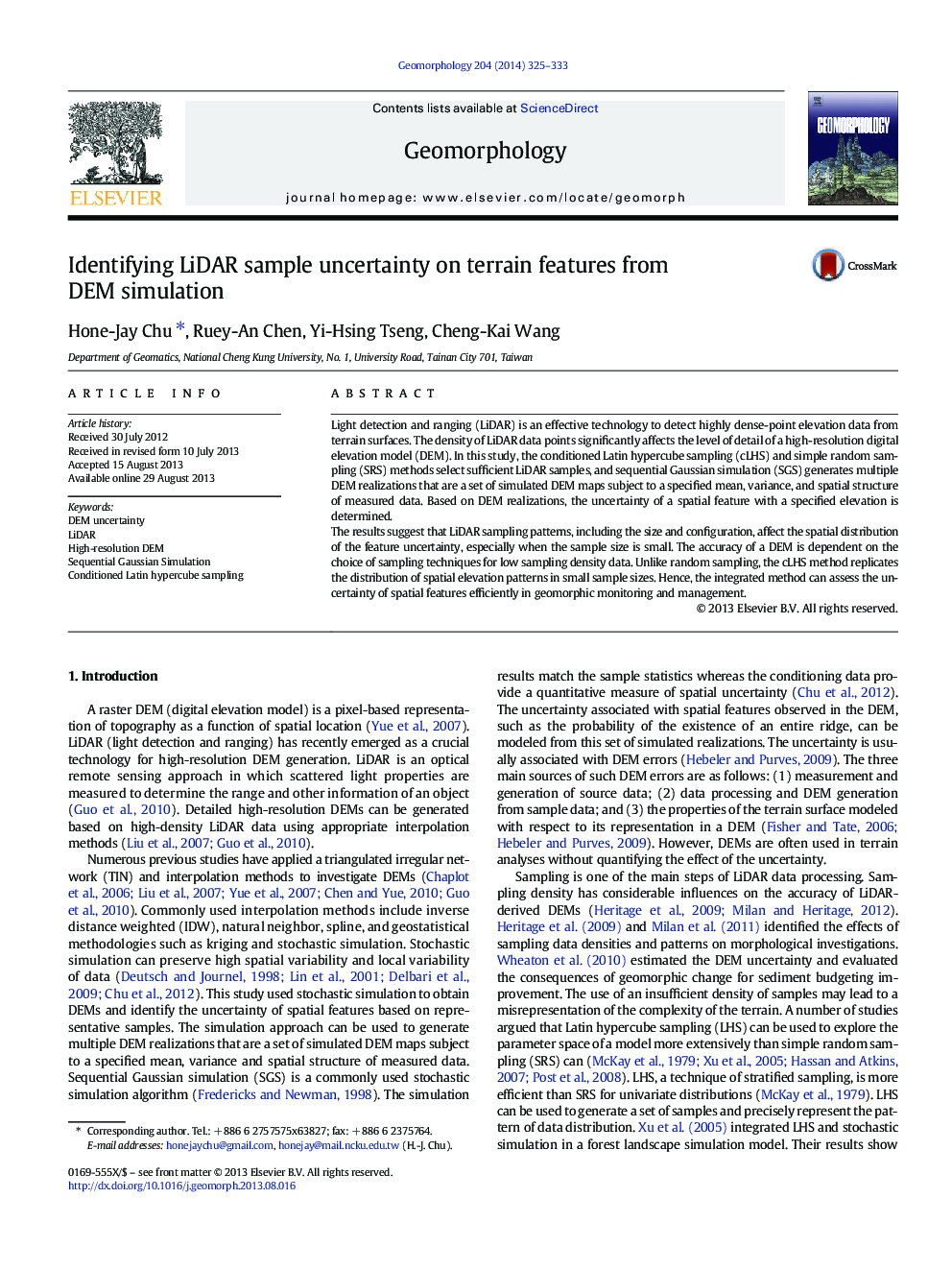| Article ID | Journal | Published Year | Pages | File Type |
|---|---|---|---|---|
| 6432742 | Geomorphology | 2014 | 9 Pages |
Light detection and ranging (LiDAR) is an effective technology to detect highly dense-point elevation data from terrain surfaces. The density of LiDAR data points significantly affects the level of detail of a high-resolution digital elevation model (DEM). In this study, the conditioned Latin hypercube sampling (cLHS) and simple random sampling (SRS) methods select sufficient LiDAR samples, and sequential Gaussian simulation (SGS) generates multiple DEM realizations that are a set of simulated DEM maps subject to a specified mean, variance, and spatial structure of measured data. Based on DEM realizations, the uncertainty of a spatial feature with a specified elevation is determined.The results suggest that LiDAR sampling patterns, including the size and configuration, affect the spatial distribution of the feature uncertainty, especially when the sample size is small. The accuracy of a DEM is dependent on the choice of sampling techniques for low sampling density data. Unlike random sampling, the cLHS method replicates the distribution of spatial elevation patterns in small sample sizes. Hence, the integrated method can assess the uncertainty of spatial features efficiently in geomorphic monitoring and management.
